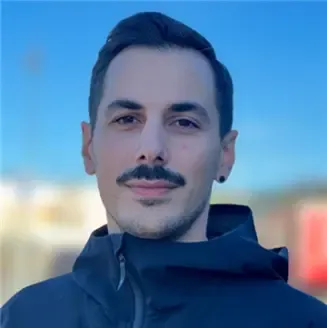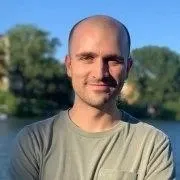Six projects receive StratNeuro Start-up Grants

The StratNeuro Start-up Grant is intended to support outstanding Neuroscience researchers at the beginning of their careers. StratNeuro will allocate in total SEK 6,000,000 to fund this initiative, each project receiving SEK 500,000/year for a period of two years.
StratNeuro awards a total of SEK 6,000,000 to support new faculty at KI and promote strategic and groundbreaking research in the field of neuroscience.
The awardees are, in alphabetical order according to the applicants' last names:
- Axel Abelein, Department of Medicine, Huddinge
- "Molecular insights into chaperone-amyloid interactions for biomimetic treatment of neurodegenerative diseases"
- Daniela Calvigioni, Department of Neuroscience
- “Sexual dimorphism in anxiety disorders: multi-node time map of maladaptive developing brain circuits.”
- Konstantinos Chiotis, Department of Neurobiology, Care Sciences and Society
- “MAIN: Multimodal Astrocyte Imaging in Neurodegeneration”
- Harald Lund, Department of Physiology and Pharmacology
- “Macrophages regulating homeostasis and breakdown of the blood-nerve barrier”
- Jens Magnusson, Department of Cell and Molecular Biology
- “Ultra-multiplexed gene regulation and machine learning for next-generation cell therapy for stroke”
- Luana Naia, Department of Neurobiology, Care Sciences and Society
- “Mitovesicles: a novel approach to understand and tackle neurodegeneration in Alzheimer ́s disease.”
We reached out to the grant recipients to delve into their research projects and the impact this funding will have on their professional trajectories. Here is what they said:
Axel Abelein

My current research aims to obtain molecular insights into molecular chaperone interactions with amyloid fibrils related to neurodegenerative diseases. In the current project, we will investigate how specific sites on amyloid fibrils can be targeted by naturally occurring chaperones to inhibit generation of neurotoxic species. This knowledge is the basis for the development of new biomimetic treatment strategies against neurodegenerative disorders, with a focus on Alzheimer’s and Parkinson’s disease.
In our research we apply various disciplines from structural biology & biophysics where we utilize the new methodological developments within high-resolution protein structure determination to elucidate the chaperone-amyloid interplay and link it to the inhibition of amyloid-associated neurotoxicity.
The StratNeuro grant provides important funding to further establish my team working with protein misfolding and chaperone interactions for future medical applications.
Daniela Calvigioni

Adolescence is a critical developmental stage characterized by heightened brain plasticity, when stress and adverse life events can induce long-lasting functional reorganization of brain circuits. Many mental illnesses, including anxiety and depression, appear for the first time in adolescence. Sex differences in mental health problems emerge and peak in adolescence, underscoring the importance of sex-specific considerations in mental health research. My profile allows me to combine state-of-the-art Systems Neuroscience methodologies to investigate developing brain circuits. My research will investigate how brain circuits of emotions develop in in naïve and anxiety conditions and identify cellular mechanisms that ultimately drive behavioural transition to anxiety-like behaviors in mice. I will apply a multimodal approach to uncover the cellular and circuit mechanisms causal to sensitivity adolescence and sex-vulnerability.
The support from StratNeuro as a starting group leader is an invaluable support to establish myself as an independent researcher as well as contributing to national visibility.
By understanding the neurobiology behind the processing of emotional stimuli within specific brain circuits and their maladaptive transition to a pathological state, we hope to ultimately develop more effective treatments for anxiety.
Konstantinos Chiotis

As both a clinical neurologist and neuroscientist, I have observed firsthand the heterogeneity in clinical presentations, clinical course and responses to treatment strategies in individual patients with cognitive complaints. This heterogeneity stems from the complexity of the pathophysiology of these diseases, which we only partly understand with the available tools. My overarching objective is to pioneer the development of innovative imaging markers of brain inflammatory changes. The validation of such markers holds the potential to help us bridge the gaps in our understanding of cognitive disorders. By utilizing these markers in the clinic we could achieve early and accurate diagnosis in our patients, unravel the reasons for clinical heterogeneity, pinpoint novel therapeutic targets, and optimize patient selection for existing treatment strategies in clinical trials.
This grant is an excellent opportunity to contribute to the development of my lab and the establishment of this research direction. Given the complexity of the undertaking, we have established national and international collaborations that will contribute to the results.
Harald Lund

Sensory neurons are some of the longest cells in the body. They have peripheral axons extending into skin, muscle or bone and central axons innervating the spinal cord. Their neuronal cell bodies, however, are collected in dorsal root ganglia (DRG). DRG are peculiar in that they lack a conventional blood-nerve barrier. They are highly vascularized, their blood vessels are permeable to blood proteins and the vasculature is guarded by an active immune cell network.
I am interested in understanding how the vascular, immune and neuronal cells interact in the DRG to maintain homeostasis. I am also interested in understanding whether manipulating the blood-DRG barrier can be a strategy to treat disorders where sensory neurons are damaged or destroyed. One such example is chemotherapy-induced peripheral neuropathy.
This grant comes at a critical time point as I am building up my own research group. It will help me employ a PhD student that can work on the project. The grant also means being part of the StratNeuro network which I am excited about.
Jens Magnusson

Brain injuries have devastating long-term consequences, partly because the brain is almost completely unable to replace lost neurons. One radically bold solution is to convert support cells inside the living brain into therapeutic replacement neurons using advanced bioengineering technology. Now, I and my colleagues have developed new such technology. Consisting of both computational algorithms and molecular tools, our technology is designed to perform precision cell fate engineering in a data-driven way. I now seek to apply this workflow to develop new and improved strategies for brain repair.
The StratNeuro start-up grant will be incredibly enabling, both for this project and for me personally as an emerging group leader, as it will truly make a big contribution to our ability to passionately pursue this research.
Luana Naia

Mitochondria have a multifunctional and malleable nature and are the most social organelles in the cell. Although their importance is increasingly recognized in the neuroscience field, we still know very little about how mitochondria support metabolic cooperation between different brain cells and how this influences neurodegeneration and repair.
We intend to explore the mechanisms underlying mitochondrial transfer between neurons and glia cells, with a special focus on the transfer mediated by mitochondrial-derived extracellular vesicles – mitovesicles, and their contribution for bioenergetic dysregulation in Alzheimer´s disease. We further aim to explore the potential of mitovesicles as a therapeutical strategy and/or biomarker for disease progression.
This start-up grant provides me important funding to strengthen my independence and expand my research team, and will hopefully foment new collaborations within the StratNeuro community.
